Nature's planting time
When you’re a gardener every season has its charm. Spring delights with its sudden symphony of flowers. Summer is for enjoying our outdoor spaces with family and friends. A winter garden has a restful beauty all of its own. But for anyone who enjoys the creativity inherent in gardening, autumn is the season to relish. It’s the ideal time to indulge in planting just about everything!
After the energy-zapping heat of summer, autumn’s cooler air revitalises body and soul, so it’s a lovely time to be busy outdoors. Plants love autumn too. The soil is a storehouse for summer’s warmth perfect for root growth when the rain comes along. Above ground leaves and shoots thrive in cool moist air.
Plants respond to being moved from nursery pot to warm moist soil with a flourish of pre-winter growth that holds them in good stead for spring. The most important growth happens unseen, below ground.
New plantings that have time to make substantial root growth before winter are ready to support the rapid top growth in spring. Conversely, roots that are transplanted into cold spring soil can struggle to keep up with the demands of rapidly expanding top growth.
Trees, shrubs and hedges are top priority for autumn planting. Planting in autumn effectively saves water because well established roots are less dependent on watering during their first summer.
Edibles to plant as the weather cools down include cabbages, cauliflowers and other brassicas, whose all the sweeter at harvest after a touch of winter chill. It’s a good time to plan and prepare the ground for new seasons fruit trees, which arrive in garden centres in early winter. Blueberries and feijoas are ideally planted in autumn. In frost-free climates it’s a good time to plant citrus and avocados.
Flowering annuals and perennials also thrive when planted in autumn. Choose flowering annuals that survive the winter cold. Pansies, primula, polyanthus and cyclamen flower from autumn right through winter and spring. Poppy seedlings (or seeds) planted in autumn will reward us with beautiful flowers from earliest spring. If you’ve been dreaming of a wildflower garden, now is the time to sow seeds directly onto moist, well-drained soil. Cornflowers, poppies, calendula, alyssum, and cosmos are some of the best for self sowing. To make it simple, choose a packet of mixed wildflower seed. Seed blends that attract pollinators and other beneficial insects, are a great option for planting around vegetable gardens. Be in to win Yates wildflower seeds (see page 30).
Spring flowering bulbs such as tulips, daffodils and hyacinths thrive and grow through winter to produce flowers from earliest spring.
Planting tips:
- A tree is a long-term investment. Plant the best quality, best shaped tree you can buy.
- Water thoroughly before planting. A good way to do this is to immerse the entire root zone in a bucket of water until the bubbles stop rising, before you remove plants from their pots.
- Dig a hole at least twice as wide as the roots.
- Add controlled-release fertiliser into the planting hole.
- Position stakes while you can still see the roots. Ideally use two stakes, one each side of the tree, and tie with flexible ties.
- Gently firm the soil around the roots and water again after planting.
- Add a layer of mulch to retain moisture and block weeds.
Top picks for Autumn planting
Hedges for screening
Where there is a need add a privacy screen or shelter, hedges offer a cooler, softer alternative to fences and walls and its surprising how quickly this can be achieved. Ask at your garden centre for a hedge to suit your needs.
Fairy magnolias
Fairy Magnolia® is a new hybrid of Michelias bred to produce masses of beautiful fragrant flowers. These plants are so free flowering that they have a flower bud at each leaf axil and have been known to provide a light flush of flowers during summer too.
Camellias
Useful as small trees, colourful flowering container plants, background fillers, hedges or wall plants and groundcover, camellias are among the most versatile evergreens with colourful flowers during autumn and winter.
Lavender
Lavenders offer fragrance and eye-catching colour for pots and garden borders. They mix well with other garden plants and make a colourful addition to herb and vegetable gardens, attracting bees and many other beneficial insects. There is a variety to suit any soil and climate.
Tulips
Tulips say spring like nothing else. Don’t miss out on the chance to plant your choice of the colourful range of these and other spring flowering bulbs available in garden centres for the new autumn season. Ideally savoured in pots, these treasures will light up your life in late winter and early spring.
Heucheras
These versatile foliage perennials remain firm garden favourites, popular as edging, mass groundcover, for mixing with flowering annuals, or as colourful foliage for pots. They look great all year, cope with dry conditions and the range of colourful varieties is astounding. Pretty, long lasting flowers are the ‘icing on the cake’.
Viburnum ‘Davidii’
A shapely little evergreen shrub with attractive large leathery leaves, pretty white flowers with dark-blue centres. It combines beautifully with grasses or fine leafed shrubs. Male and female flowers are produced on separate plants, and planting a ratio of at least 1 male to 5 females is rewarded with blue autumn berries.
Pseudowintera ‘Red Leopard’
This stunning compact shrub is a selection of the NZ Horopito. In tones of ruby red and lime green the foliage makes a superb year round show in the garden or containers. For best colour plant it where it gets some sun and trim it to shape if required.

1-Mar-2019
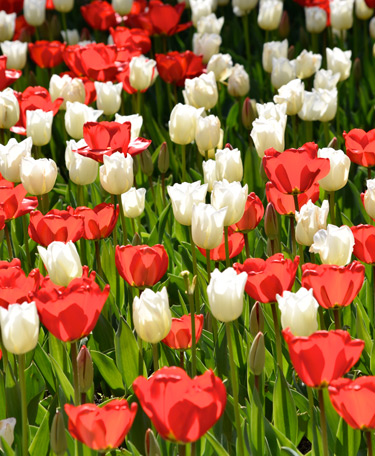
Tulip bulbs are planted in autumn and are best planted en-masse for a dramatic display.
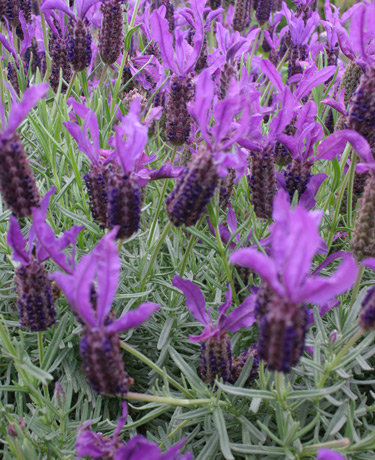
Lavenders planted in autumn will be ready for an early spring flowering.
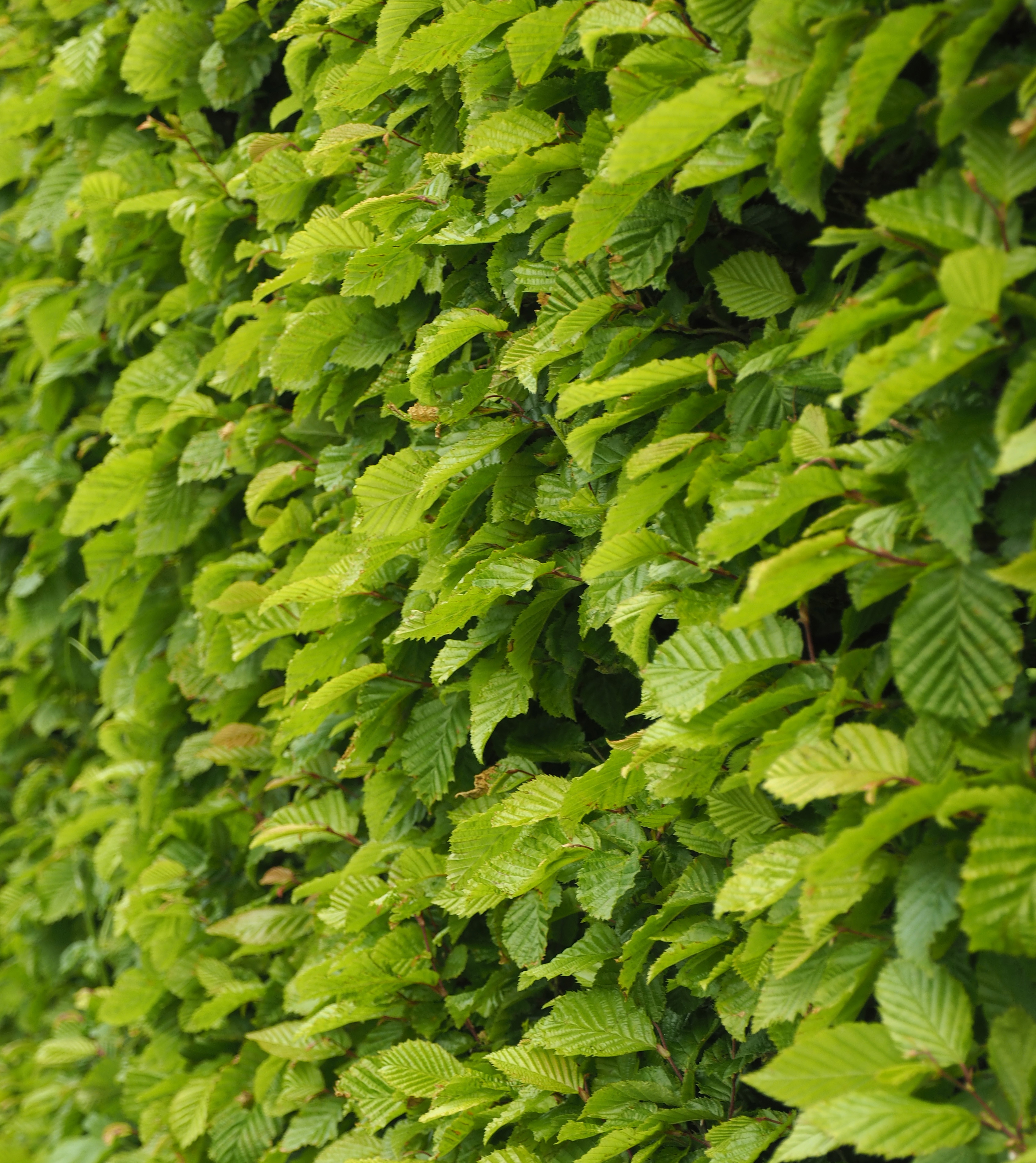
Hedge plants establish well in autumn.

Viburnum 'Davidii'
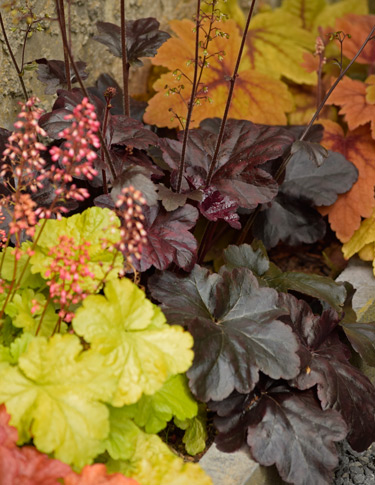
Heucheras in a variety of leaf colours.
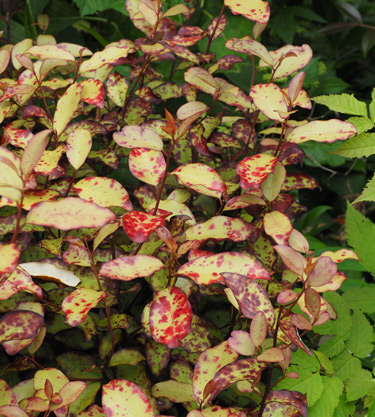
Pseudowintera 'Red Leopard'

